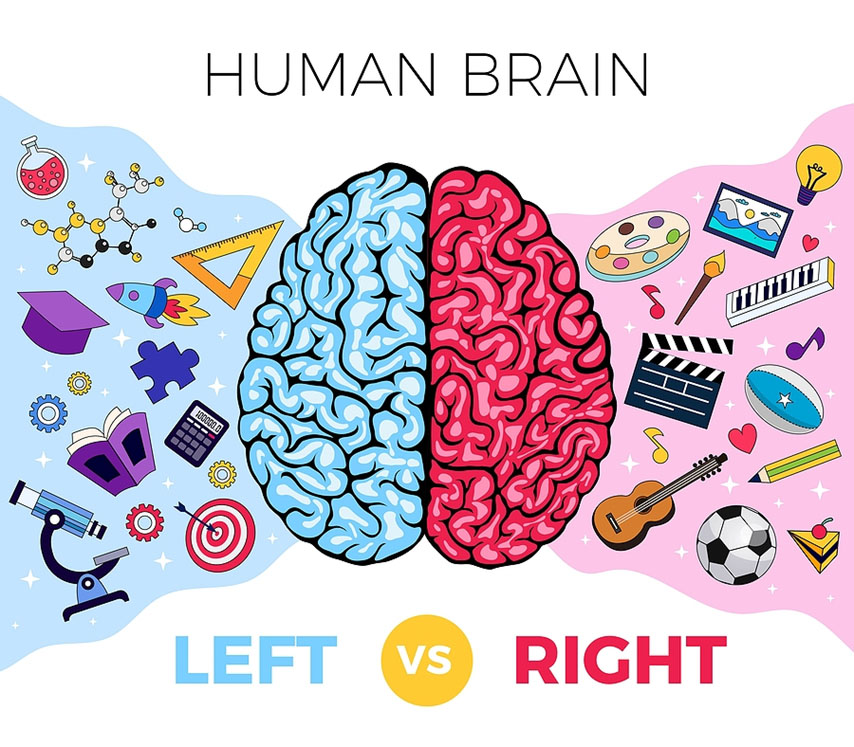Written by Sean McPheat | 

Scientists tell us that humans have more than one brain.
Some people you know may disprove that rule (only half a brain?!) but the truth is that everyone has three parts to their brain: firstly, there’s the reptilian brain, responsible for fight or flight, and located at the top of the spine, close to the back of your skull.
Secondly, there is the limbic system, commonly called the emotional brain, naturally responsible for the emotions we all feel.
And third, there’s the thinking brain, the third brain, the grey matter.
This is divided into two halves, the left side responsible for logical thinking, the right side for more creative, musical thinking.
When was the last time you purchased a car?
How did you make your purchasing decision? If you think about it the purpose of a car is to get you from A to B. But you will have certain logical requirements that are needed. If you have kids, it might be safety. If you have a caravan, it might be a built-in towbar. These are all logical traits. But I bet at sometime or another you thought about what others would think of you or how good you would look in it? Better still, you’d get one over on that neighbour who is bragging that their motor is the best. These are examples of emotional reasons to purchase.
You may think that all of your different buyer types are rational, logical thinking prospects.
Logic includes return on investment, speed of response, quality of product or service, length of warranties, terms of credit, etc.
If we think that all decisions are made at the logical level, then we miss a lot of communication that is made by the prospect at a differing level, something that drives decision-making and problem-solving deeper than we realise.
You see, humans (yes, even your prospects) are affected by the emotional contacts we have, as decisions are made at a deeper level than just the logical.
You may have heard the expression, “we buy on emotion then justify with logic”.
It’s true, because the decision-making processes we use go through the emotional brain first before being presented to the logical thinking brain.
So, we need to balance the logical decision the prospect needs to make with the emotional connection they need to have with that decision.
With some prospects, we can talk at length about the benefits our products or services will bring to their business.
We can wax lyrical about the money they will save with our solution or show them the figures that will convince them that you can improve their customer loyalty.
But, if the emotions haven’t bought into what you are proposing, you will face an uphill struggle.
Although it may seem obvious you have the best answer, you still must balance it out with the emotional connection.
An example might be, during the presentation, “We have seen how your returns will be greater than with your current supplier, and how the quality of this new widget will benefit your customers. This will make you look good to your customers and new prospects and allow you to build a future for your department “.
The first sentences appeal to the logical thinking of your prospect.
They focus on what logically is correct for the prospect, things they probably couldn’t disagree with.
The next sentence back up the logical thoughts with emotional reasons.
Here, you are confirming what the prospect will feel and experience if they go with your solution.
It rounds out the thinking of the prospect, giving them balanced rationale as to why the solution would be right on many levels.
Think about how you can create a balance between what the logic says about your product and service, and why the prospect should be emotionally connected to your product and service.
By using both emotion and logic, you create a balance that will determine if the prospect makes the right decision for their business and themselves.
By concentrating on only logic, you miss a large percentage of what makes people make decisions. Here’s a video on how to use emotion and logic to influence. I hope it helps.
As a Sales Training Provider, we can help you with our wide range of Sales Courses that can help you.
Our Selling Skills Training open course covers logic vs emotion in-depth as it’s the basis for all different types of selling. If you just use logic, you most likely wont land the sale. On the other hand, if you just use emotion the buyer will not see the reasons to go with you other than a feeling. If you coming up with a lot of sales objections take a look at the percentage split of logic vs emotion that you are using in the sale. It might give you some clues!
Balance the two and you appeal to much of what makes us human.
Happy Selling!
Sean

Sean McPheat
Managing Director
MTD Sales Training
Updated on: 8 June, 2017
Related Articles

Search For More
